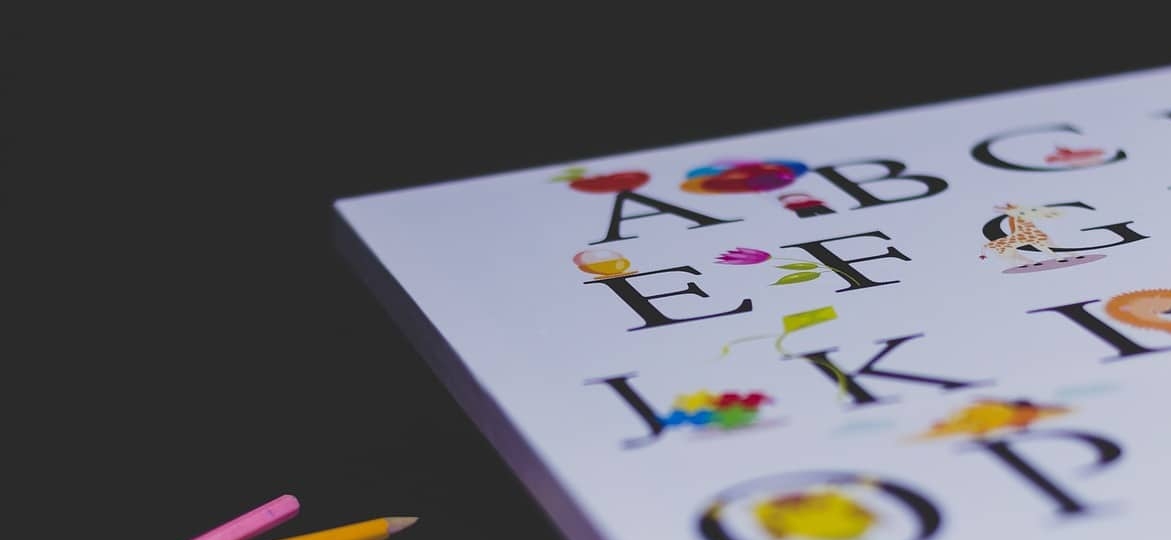So you are learning Italian: starting with the alphabet is a great choice! The Italian alphabet counts 21 letters: 16 consonants and 5 vowels. You have to learn the entire Italian alphabet and its pronunciation if you wish to properly learn Italian. Therefore; today we’ll talk about Italian vowels and their pronunciation. Here’s what you’ll discover:
- How to learn Italian vowels and their pronunciation;
- One-sound vowels and two-sound vowels;
- Italian pronunciation and English pronunciation of vowels;
- Vowels and diphthongs in Italian;
- Italian vowels: pronunciation with examples;
- Italian vowels: pronunciation exercises;
- How to practice online with Global General.
Ready to learn the Italian vowels and their pronunciation? Read on to discover everything about it!
How to Learn Italian Vowels and Their Pronunciation
To learn Italian vowels and their pronunciation, you need to find out everything about them: how many vowels are there? How many sounds are there in each vowel? Are there any diphthongs in Italian? How to pronounce them? In the following sections we’ll discuss all of these themes. To learn the Italian vowels, you need to know these three main points:
- First of all, in the Italian alphabet there are 5 vowels: a, e, i , o, u. They are divided into “one-sound vowels” and “two-sound vowels”. We’ll take a look at them in the next section, using some examples in English to help you understand their proper pronunciation.
- You can learn Italian pronunciation easily by using English words as samples. Knowing for example that “a” in Italian is like “a” in “car”, will make it easier for you to remember how “a” is pronounced when you see it in a new word.
- Once you know the 5 vowels and their sounds, it’s time to learn diphthongs. Indeed, diphthongs in Italian work in a different way than in English. Moreover, as you’ll find out, the Italian language uses loads of diphthongs!
Let’s start with the one-sound and two-sound vowels!

One-Sound Vowels and Two-Sound Vowels
There are only 7 Italian vowel sounds (one each for a, i and u; two each for e and o), while in English we have around 15 or so.
Italian vowels are pure. A sound written with a single letter has a single, unchanged sound. On the contrary, in English the sound often changes from one pure sound to another sound. For example, the “o” in go changes from the pure o-sound of Italian to the sound made by “oo” in the English word choose. So, it has two different sounds depending on the word.
Unaccented English vowels tend to change value towards a more neutral sound; Italian vowels don’t. That’s good news, isn’t it?
One-sound vowels
So, let’s start with the three one-sound Italian vowels: a, i, u.
Italian “a” is very open. For many American English speakers, it is similar to the short “o” in “hot” or to the first “a” in “papa”. Remember that it should never sound like “uh” or “aw”.
On the other hand, “i” and “u” are easier because they make sounds which are used regularly in English. Italian “i” has a long “e” sound, as in the word “sheep”. Italian “u” has the sound of “oo” in “boot”.
Two-sound vowels
Let’s take a look at the two-sound Italian vowels: e, o. Both of them have a so-called “open” and “closed” sound.
There is often no way to know which sound to use in a particular word if you haven’t heard it spoken correctly, but there is one simple rule for the spoken language: Italian unstressed “e” and “o” are always closed.
Open “e” makes a sound similar to English short “e”, as in “bet”; the Italian sound is maybe a bit more open. Closed “e” has a sound like the “a” in chaotic. It’s not the same as the much more common in English vowel sound, since this slides from the sound we’re looking for into “ee”.
Open “o” is like the vowel in “awe” if you say it without any hint of diphthong. Closed “o”, like closed “e”, rarely occurs in English without sliding into something else. It’s the first vowel sound in go, before it turns into “oo”.
Italian Pronunciation and English Pronunciation of Vowels
As we mentioned above, you can learn Italian pronunciation easily by using English words as samples. So, you need to know that “i” in Italian is like “i” in “sing”, and that “u” is pronounced like “oo” in “soon”.
Associating Italian vowel sounds with English words will make it easier for you to remember how they are pronounced when you learn new words.
For example, imagine you find the word solitudine (meaning “solitude”). Thinking that “o” is like “o” in “common”, “i” is like “i” in “sing”, “u” is like “oo” in “soon” and “e” is like “e” in “bet”, will help you pronounce it correctly right away!
Try to practice while reading something in Italian. When you find a new word, analyze each vowel and try to pronounce the word aloud. Then verify with an online dictionary (many online dictionaries also have the option of listening to an audio track recorded by a native speaker).
Vowels and Diphthongs in Italian
Diphthongs are always written with 2 vowels and are frequent in Italian. Sometimes “i” is pronounced like “y” in “yard” (e.g. in the word pietà) rather than having its normal value, and similarly “u” may make a sound like English “w” (guarda).
Other than these cases, each vowel in a diphthong has its usual sound, though in a stressed syllable one is longer than the other (no rule to determine which should be the long one), and the two sounds are distinct, with no slide from one into the other.
Some Italian words with diphthongs are: piegare (to bend), migliorare (to improve), spiegazione (explanation), chiaro (clear), and so on.
Italian Vowels: Pronunciation With Examples
To sum up, the 5 Italian vowels have 7 sounds. “A, i, u” are one-sound vowels, while “e, o” are two-sound vowels. Let’s take a look at them in the following chart, where you can see the IPA for each vowel, accompanied by sample words with their translation.
| Letter | IPA | Exemple | Translation of the example |
|---|---|---|---|
| a | a | alto, amico | tall, friend |
| e | e | vero, perché | true, why |
| e | ɛ | etto, cioè | hectogram, that is |
| i | i | immaginazione, così | imagination, so |
| o | o | ombra, no | shadow, no |
| o | ɔ | notte, però | night, but |
| u | u | ultimo, più | last, plus |
Italian Vowels: Pronunciation Exercises
To learn the proper sounds of each Italian vowel, there are many exercises you can do. Especially at the beginning, it’s important to listen to native speakers, so we recommend you to watch some videos like this one and repeat after the teacher. You can then pass to other kinds of exercises like the following:
- “o” is usually pronounced like: “o” as in hot, “u” as in duh, “o” as in rope
- “i” is always pronounced like: “i” as in hit, “i” as in ripe, “ee” as in jeep
The best way to learn the correct pronunciation of each vowel is to follow the steps we suggested in this article: learn the 5 vowels, use English words to memorize their sounds, learn the diphthongs. Listening to native speakers and repeating after them is a great exercise. When you feel ready, you can try to read aloud by paying attention to vowel sounds. You can ask an Italian friend to correct you. If you follow these techniques, you can easily achieve a great Italian accent.
If you need high quality grammar explanations, exercises and the support of a native-Italian coach, we have the perfect solution: read the next section to discover what we are talking about!
How to Practice Online With Global General
If you are looking for the best way to learn Italian pronunciation online, you should definitely try Global General.
This all-inclusive e-learning method developed by GlobalExam is tailored for beginners and intermediate-level students to learn Italian online, practicing all of the competencies with just one easy solution. It includes grammar explanations, practical exercises for listening, reading, writing and speaking skills, corrections, and much more.
Created by expert linguists and teachers, Global General offers 5 languages: Italian, English, Spanish, French and German. Every language goes from the A1 to the B2 level and is developed according to the CEFR standards.
Our offer in a nutshell
Here’s what you’ll find in our unique offer:
- Flashcards to help you train your memory and learn new vocabulary in a fast and fun way!
- Simulations to practice your language skills in real context, for all the competencies, through speaking, reading and listening exercises;
- Exercises for grammar, vocabulary and listening comprehension;
- A “did you know” section to deepen your knowledge of the language;
- 5000 detailed corrections in your language;
- Personalised feedback from our native-speaking coaches;
- Online conferences with our native coaches, with a practical component where you’ll be required to complete some exercises and you’ll be given personalized corrections;
- Validation of the acquired competencies every 5 simulations with certificates;
- Scores for every exercise to help you understand your level and progress;
- 150 hours of unique content and 500 audio tracks.
Try Global General to learn Italian remotely: study whenever and wherever you feel like, at your own pace! You only need to have your computer or tablet with you, an internet connection and… you’re ready to learn Italian! Choose a flexible yet professional method which guarantees you great results — choose Global General!
Sign up now and start learning Italian pronunciation, grammar and vocabulary with Global General by GlobalExam!



